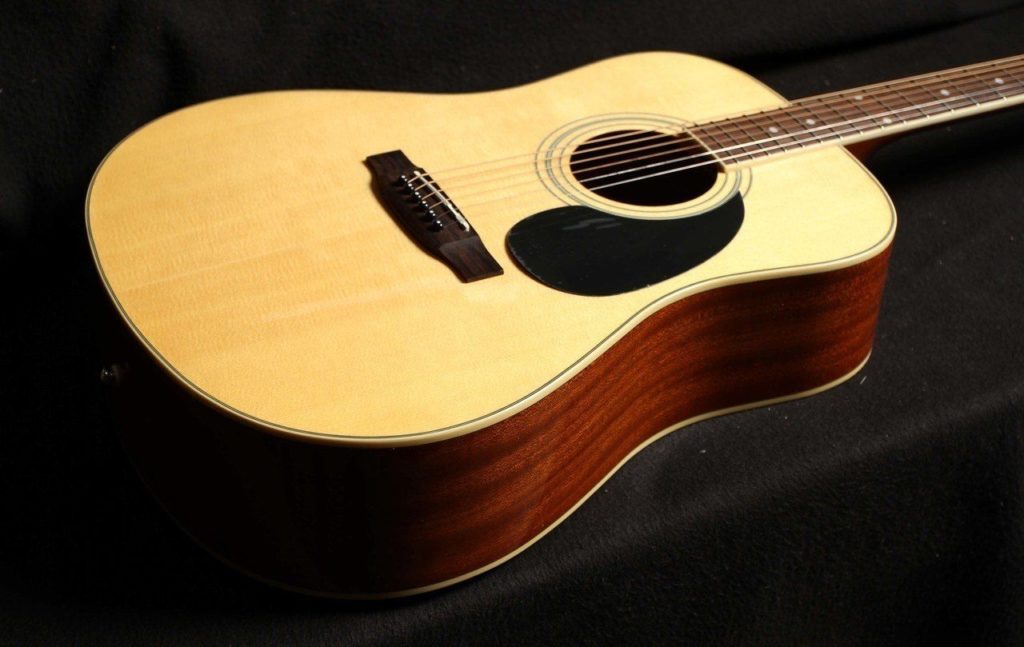Guitars are commonly manufactured in climate-controlled plants, usually somewhere at 47%-54% relative humidity. This is the environment it was made to be in and live out its life. If it’s changed, the guitar may not respond well! Winters can be VERY dry in some climates, which is very hard on guitars.
This article is centred on acoustic guitars, but even electric guitars show signs of stress due to low humidity. Where they show it most is in the fretboard & the neck, whereas an acoustic guitar can be effected in its structural entirety.
What is relative humidity?
It is the amount of humidity or moisture in the air in relation to temperature.
What is the relative humidity?
It’s always fluctuating, but if you live somewhere as cold as I do, you can count on it being nowhere near 45%. In the house it’s often much lower because of heating/cooling systems. The forced air is even dryer than outside in many cases. Even where there is a built-in humidifier, your house climate control is probably putting your guitar through the wringer.
What happens to the guitar when it’s too dry?
Wood expands and contracts, twists, shifts, and contorts long after it has been cut and dried for use. Wood being a once-living fibre, is as unique in its structure as any creation of nature. Therefore each guitar will behave differently, even when coming from the same manufacturer (and each manufacturer treats their wood differently). Have you ever played a guitar that just feels alive? It’s because it has soul! It’s how the wood is handled from day one. Anyways, enough of that hoodoo…
Common symptoms of a dry guitar:
- Sharp frets overhanging the fretboard (the wood has shrunk).
- Play-ability is inconsistent, buzzy notes in some areas (wood shrinks and pushes out the fret from the fret slot).
- Warps in the wood or neck, sometimes twist, bulge, or splits.
- Cracks in wood, cracks in acoustic tops/sides/back/bridge (very common).
- The old’ “hump at the 14th fret” – Acoustic guitars often will have a rise form in the neck in this area, making it either fret out in the area or many areas depending on how it is setup. Very common.
- Mile-high action on acoustics – the wood dries up, the soundboard caves in the center, the bridge pushes up, and the neck angle changes. Also common.
- Super low action on acoustics – just like the above example, but the sunken guitar top pulls the bridge down and strings with it.
- Acoustic bridges separating from the top, and/or splitting.
“Oh no, my guitar has some of these symptoms! Is it a lost cause?”
Not at all. Depending on the severity and how long it’s been dry, often, a guitar can be brought back to its original condition by simply humidifying it properly. Other times, it is a combination of humidifying and readjustments. Extreme cases are specific to the individual guitar and best to have it looked at by a pro.
How can it be prevented?
Use a humidifier if you own an acoustic guitar. Some guitars are hardier than others, so if your guitar is worth anything to you, buy a $12 humidifier from your local guitar store and keep it in the case with your guitar. Easy! On expensive guitars, in the winter, I’d pass along the suggestion on Taylor Guitar’s website and use two humidifiers of the damp-it variety (the Planet Waves work well too). Place one in the soundhole, one near the headstock, and keep the guitar in its case when not in use.
Electric guitars with sharp fret ends? Get them filed off. High frets? Get them popped back into place (and glued). Any competent repair person can do basic fret repair like this. Having your fret ends filed will give you back the smooth feel of the neck as it had when it was new (or should have had). It’s common for new guitars to be a little distressed, as there is a settling period after manufacture that can continue after once you’ve taken it home.
Extreme cases
What about guitars that have been neglected for years and are all bent out of shape or cracked up? Can it be fixed? Quite likely, although each case is unique and it’s best to take it to your guitar technician for a thorough evaluation- or, why not use it and learn some structural repairs of your own?
Have questions? Post them below!






